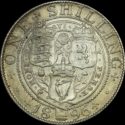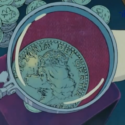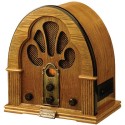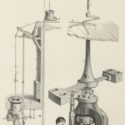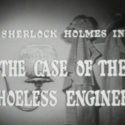A Scion Society of The Baker Street Irregulars
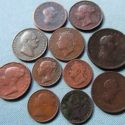
A Sherlockian Visits the Currency Exchange (1986)
“Sold his soul to the devil in exchange for money”
– The Adeventure of Wisteria Lodge (WIST)
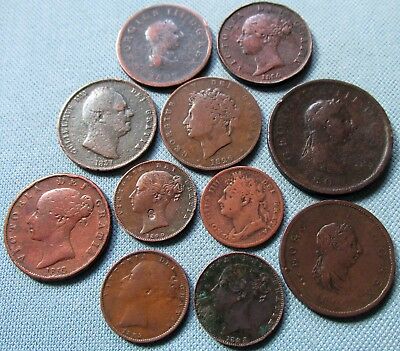
Seven hundred and fifty pounds, Dr. Grimesby Roylott had as the annual income of his late wife’s estate. The reader of The Speckled Band is supposed to understand that £750 is a lot of money, but that £250, which would be left to Roylott if both his step-daughters married, is a much less satisfactory sum to live on. How shall we modern North Americans visualize £750?
It is of little use to turn to the faithful Annotated Sherlock Holmes and be told that £250 was “worth, at the time about $1,250 U.S.” Fine, but how much is that? The redoubtable William S. Baring-Gould makes no allowance (beyond the unhelpful phrase “at the time”) for the change in the value of money between the 1890’s and the 1980’s; no allowance for fluctuations in the exchange rate between pounds sterling and either of the North American dollar currencies; no allowance, either, for changes in the standard of living.
It is, however, possible to develop a formula which readers can use to estimate the meaning of any sum of money quoted in the canon. One simplifying fact is the virtual absence of inflation in Britain during the entire canonical period. Though there were fluctuations, as Holmes indicates with his reference to agricultural prices in The Speckled Band, there was no consistent change in the value of money from the period immediately after the Napoleonic Wars until the perturbations of The First World War.
Economists use a series of techniques to calculate “modern” values for sums of money; these include the “chain linking method,” determining the price from year to year of a slowly changing “basket” of consumer goods, and the “purchasing powere parity exchange rate” to compare the real (rather than the official) comparative value of currencies. It is possible to apply those techniques to find a precise – perhaps too precise – conversion. But for everyday purposes, the calculation is, as Holmes said in a rather different context, a simple one:
- One pound equals $70 Canadian.
- One shilling (there were 20 shillings to the pound) equals $3.50 Canadian.
- One penny (there were 12 pence to the shilling) equals 29 cents Canadian.
What I mean by equals here is that if you take any canonical sum an multiply it by the factor I have given, you will get a sum which would have roughly the same impact on people now which the sum mentioned in the canon had then.
I had better quote some examples immediately. In Silver Blaze, for one famous instance of a stunning price, there is mention of a lady’s dress which had cost 22 guineas. (Guineas are a pecularity of the British currency; a guinea is one pound plus one shilling, and is a favorite unit for the pricing of luxury goods. So the price is in fact 23 pounds 2 shillings.) Multiplied by 70, that gives a contemporary Canadian price of $1,617. No wonder Holmes doubted that John Straker could have afforded such a dress!
At the other extreme, there is Mary Sutherland’s price for typing: twopence a page or 58 cents – a bargain by current standards in college towns, but not out of the question. A moderate sum, then, is the price quoted for a goose in The Blue Carbuncle; 7s6d (seven shillings and sixpence) at wholesale and 12 shillings at retail, of $26.25 and $42. One would get quite a fowl for $42 in a contemporary supermarket; suddenly the picture is of Henry Baker not with a scrawny bird, but with a hefty carcass which would indeed have hampered him on his homeward way, and which would have been a major financial loss, as indeed it apparently was.
In The Noble Bachelor, Holmes makes some deduction based on prices, and the eyes of modern North Americans grow a little glassy for lack of understanding. “Eight shilling for a bed,” says Holmes,”and eightpence for a glass of sherry pointed to one of the most expensive hotels.” The 70-times formula translates the first figure into $28 a night for a hotel room, which is low by any contemporary standard but must be seen in terms of acommodations provided; certainly the room had neither air conditioning nor colour television, and it probably did not have a bathroom attached. The price of a glass of sherry, translated to $2.33, is by no means improbable for the elegant bar of an elegant hotel. (And lunch at 2s.6d., that is two shilling and sixpence, reasonably become $8.75.)
Salaries present a special puzzle: was Violet Hunter’s £100 a year, plus room and board, a little or a lot? Translate it into $7,000 and one is able to make at least a tenative judgement. Mary Sutherland’s expenses of £60 a year, say $4,200, seem modest indeed. Jabez Wilson, earning £4 a week for copying out the Encylopaedia Britannica might well have been happy with his extra $280 for a few hours work.
The same formula makes it clear that John Clay had his eye on $2.1 million worth of French gold; that the reward offered for the Beryl Coronet was $70,000, and that the coronet was given as security for a loan of $3.5 million. And one is able, at long last, to answer Sherlock Holmes’s question to Isdora Klein. Is it possible to go round the world of £5,000? Indeed it was; and indeed it still is. For £5,000 then means about $350,000 now, and that is almost exactly the price of the finest stateroom aboard the M.V. Queen Elizabeth 2 on her last round-the-world cruise.
The 70-to-1 conversion which I advocate here was arrived at by a somewhat crude method; I took various possible factors, converted canonical sums into modern values using each of them, and chose the factor which seemed to me to produce the most plausible results. When that process was completed, and indeed when this report was drafted, I did what I should have done in the first place: consullted an expert. He was Dr. Lionel Needleman, a member of the Bootmakers and a professor of economics at the University of Waterloo, and he kindly spent some time doing calculations based on figures from the London and Cambridge Economic Service and other sources of price data.
In outline, he told me that he began with a price index which rose, according to the chain linking method, from 21 in 1900 to 120.8 in 1965 (1958=100) and then, as sharp inflation hit Britain to 545.7 in 1980. At that point he converted the pound to the Canadian dollar using the purchasing power parity exchange rate (£1 was worth, conveniently, $2.00 by that method in 1980), and then he inflated the Canadian dollar by the Consumer Price Index over a five-year period.
The conclusion: a pound sterling was worth what $74.32 Canadian was worth in June 1985.
Neither that precise figure nor my $70 rule of thumb can be taken as an exact rule, of course. When either is tried and the result seems odd, the suspicion should be that something has changed not in the currency but in the society. For example, a consumer item may be rarer than it used to be, or much commoner. In particular, since the conversions are based chiefly on consumer products (and the “basket” used in the precise calculation is, explicitly, a summary of items generally purchased by members of the lower middle class), translations of incomes will tend to look low: in fact, incomes were lower then, which is to say that the standard of living has risen.
Still, one must not be misled by the two incomes of Neville St. Clair, as beggar and as journalist. With his lip twisted and his face dirty, he took in 26s4d one day – call it $92. That far exceeded his newspaper of £2 a week, say $140. It is immediately obvious that $140 a week is an uncomfortably low income for a married man, although it was lavish for the unmarried Violet Hunter, especially as she received room in addition. Still, $140 a week is not unimaginable little to live on; for those in modest circumstances there was no income tax in Britain in the 1890’s, and $140 a week is in fact very close to the take-home pay in 1985 of someone in Ontario who is paid the minimum wage of $4 per hour and works a 37.5-hour week. The beggar’s take, say $550 for a six-day week, adds up to a middle-class income of $28,000 a year. The beleagured St. Clair could not, on his conventional salary, afford Grant Munro’s villa at £80 a year ($5,600, or $467 a month), but a beggar’s life gave him a living wage: precisely the point of the story.
Similar calculations show that Hall Pycroft threw over an annual salary of $14,000 (which had seemed reasonable enough) at Mawsons for a lavish $35,000 with the Franco-Midland Hardware Company. On the other hand, Dr. Watson, before he met Holmes, couldn’t live comfortably on the 11s.6d a day – call it $40. And one sees why Victor Hatherley’s fee of 50 guineas for a night’s work sounded very appealing: that’s $3,675.
A final reminder should be offered to those who prefer to think in United States dollars. To convert from Canadian curency to American, these days, one multiplies by about 0.7; that is, the dollars are worth about 40 per cent more, or the prices are about 30 per cent lower (those two figures mean the same thing, as a pencil and paper will prove).
So converting canonical pounds to contemporary American dollars means multiplying by 49, or for convenience say 50. That shilling meant as much to a Baker Street Irregular as $3.50 would now to a Canadian child, of $2.50 to an American child.
Be sure to read Chris Redmond’s 2018 update to this post, Canonical Currency in Present-Day Terms.
This article was originally published in the St. Jean Baptiste Day 1986 issue of Canadian Holmes, the official publication of the Bootmakers of Toronto.
Thanks to Peter E. Blau, the 13th Garrideb, for providing us a scan of this article.
 Chris Redmond, BSI (“Billy), M.Bt. is a longtime Sherlockian who is well known to netizens through his work as founder of Sherlockian.Net, one of the central repositories of Sherlock Holmes materials, resources and people on the web today. Chris is the author of a number of groundbreaking and controversial books such as A Sherlock Holmes Handbook and In Bed with Sherlock Holmes and others, as well as numerous Sherlockian articles. He is a member of the Baker Street Irregulars, the Bootmakers of Toronto, the Adventuresses of Sherlock Holmes, and other societies. He lives in Waterloo, Ontario, Canada.
Chris Redmond, BSI (“Billy), M.Bt. is a longtime Sherlockian who is well known to netizens through his work as founder of Sherlockian.Net, one of the central repositories of Sherlock Holmes materials, resources and people on the web today. Chris is the author of a number of groundbreaking and controversial books such as A Sherlock Holmes Handbook and In Bed with Sherlock Holmes and others, as well as numerous Sherlockian articles. He is a member of the Baker Street Irregulars, the Bootmakers of Toronto, the Adventuresses of Sherlock Holmes, and other societies. He lives in Waterloo, Ontario, Canada.

